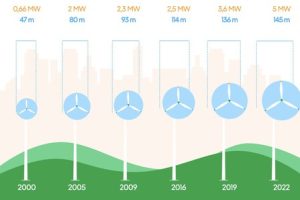Stellantis will set up a battery gigafactory together with CATL in Zaragoza. Or, at least, that is what it has committed to as long as the Chinese Government gives approval for it. Both companies are interested. The Spanish Executive has given the go-ahead. Everything will depend on the orders that arrive from China.
What happens? For months now, Stellantis and CATL have negotiated build a gigafactory for the production of batteries in Zaragoza. The land, explained in the local media, belongs to Stellantis, who has 60 buildable hectares to build the complex.
Why does an electric car have less autonomy than advertised?
Enclave is the most interesting for the company run by Carlos Tavares. Stellantis wants to manufacture its smallest electric cars in Figueruelas. These types of cars are the ones with the lowest profit margin, so saving costs (in this case by locating the gigafactory next to the factory) will help contain them. It must be added that it is also a boost for the Stellantis factories in Vigo and Madrid.
Is it important? Starting up the battery factory can be really important in the area. Since the interest became known, the dance of figures has begun and there is talk of an estimate of 3,000 people employed in the new factory.
But it is almost as important for the Stellantis workers themselves. In The Automotive Tribuneexplained this summer that production after the holidays had resumed with a drop of 25%. The production of the Citroën C3 Aircross and Opel Crossland was abandoned. The Opel Corsa, Lancia Ypsilon and Peugeot 208 remain active. At this time, the calculated volume is 1,500 vehicles per day, for the 2,000 cars assembled each day before summer.
They explain in The Aragon Newspaper that the decline in production has a direct impact on temporary jobs. The local newspaper reported that 600 of them would be lost if production fell to the levels we have seen after the summer. Having the battery factory next door is a way to guarantee a long life for the factory.
Where are we? Immersed in “the industrial program with the largest economic endowment in our history of supporting the automobile industry”, according to Jordi Hereu, Minister of Industry and Tourism of the Government. And in a recess in the absence of confirmation from the Chinese authorities, according to Carlos Tavares.
An aid of 133 million. Hereu’s statements made reference to the aid approved by the Government for Stellantis within the Perte VEC II and, specifically, within the item dedicated to the production of batteries for electric cars. a week ago, the Government confirmed through the mouth of its minister that the company would receive aid of 133.7 million euros to build this plant.
With this help, Stellantis will receive 298 million euros, if the plan goes ahead, to modernize its plants and build the aforementioned battery gigafactory. This subsidy does not come alone. The Volkswagen factory in Sagunto will receive new aid that will increase the economic boost from 98 million to 152 million euros. The Renault plant in Valladolid will also receive an economic boost of 28 million euros. All the figures are collected The Automotive Tribune.
Waiting for confirmation. But all this has to be confirmed, Carlos Tavares said at the Paris Motor Show. He medium specialized in the automotive industry has reported that the CEO of Stellantis has put the ball in the court of the Chinese State who, he assures, will have to give the go-ahead to CATL to make the investment in Aragon.
The media reports that Tavares has avoided directly mentioning CATL but has not hesitated to assure that the project depends on the approval of the Chinese authorities.
The tug of war. The decision of the Chinese Government seems, of course, to be influenced by the latest derivatives that the trade war that Europe and China seem to be starting has taken in relation to the arrival of brands from the latter country to our continent and, more specifically, on the tariffs on their electric cars.
A few days ago, the European Parliament approved that the Commission go ahead with the tariffs on these cars and, therefore, one of the last steps has been taken towards final approval. Spain, which initially supported the tariffs, has ended up abstaining but it has not reached the position of Germany, which showed its rejection of them.
It remains to be seen how far Chinese retaliation goes if, as it seems, these economic protection measures end up being approved. Europe has also announced that it will not be enough to assemble prefabricated kits in China if manufacturers do not make sufficient investments. In retaliation, the pig and the brandy (key imports for Spain and France) are in the crosshairs of the Chinese Government, which must now give approval to the Aragonese operation, according to Tavares.
Photo | Stellantis
In Xataka | “It is playing free trade with a totalitarian State”: three experts give their opinion on tariffs on Chinese electric cars















Add Comment